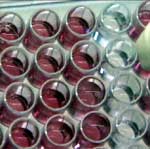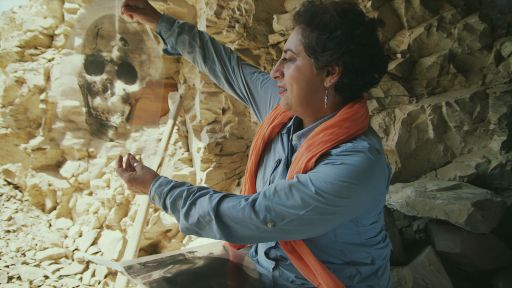For a disease-causing microorganism to infect the human body there must be a gateway or portal through which it enters into human cells. The plague bacterium works this way, hijacking the white blood cells sent to eliminate it. Traveling inside the white blood cells to the lymph nodes, the bacteria break out and attack the focal point of the human immune system. Dr. Stephen O’Brien felt that the mutated CCR5 gene, delta 32, may have prevented the plague from being able to enter its host’s white blood cells.

Joan Plant, tracing family tree.
Knowing who died and who lived through the early years of the plague is somewhat problematic. Deaths among the general English population were not recorded in the 14th Century — the height of the Plague — and most communities did not begin recording parish registers until around 1538. Fortunately, Eyam began keeping a parish register in 1630. Thus historian John Clifford began by examining the register, noting everyone who was alive in 1665, the year the plague came to Eyam. He searched for evidence of life through the year 1725 — marriages, baptisms, burials that took place years after the plague had left the village. Deleting the names of those lost during the plague period, he was able to determine who the survivors were.

Dr. Bill Paxton examines Steve Crohn’s DNA.
After three weeks of testing at University College in London, delta 32 had been found in 14% of the samples. This is a genetically significant percentage, yet what, really, did it mean? Could the villagers have inherited delta 32 from elsewhere, residents who had moved to the community in the 350 years since the plague? Was this really a higher percentage than anywhere else? To find out, O’Brien assembled an international team of scientists to test for the presence of delta 32 around the world. “Native Africans did not have delta 32 at all,” O’Brien says, “and when we looked at East Asians and Indians, they were also flat zero.” In fact, the levels of delta 32 found in Eyam were only matched in regions of Europe that had been affected by the plague and in America, which was, for the most part, settled by European plague survivors and their descendants.

Crohn’s blood, resisting infection.
Scientists studying HIV first learned about the gateway-blocking capacity of the CCR5 mutation in 1996. Several drug companies, then, quickly began exploring the possibility of developing pharmaceuticals that would mimic delta 32 by binding to CCR5 and blocking the attachment of HIV. Previous methods of treatment interfered with HIV’s ability to replicate after the virus has already entered a cell. This new class of HIV treatment, called early-inhibitor — or fusion-inhibitor — drugs seek to prevent the virus from ever attaching at all. These pharmaceuticals are still in relatively early stages of development, but certainly stand as a hopeful new method of approaching HIV treatment.









